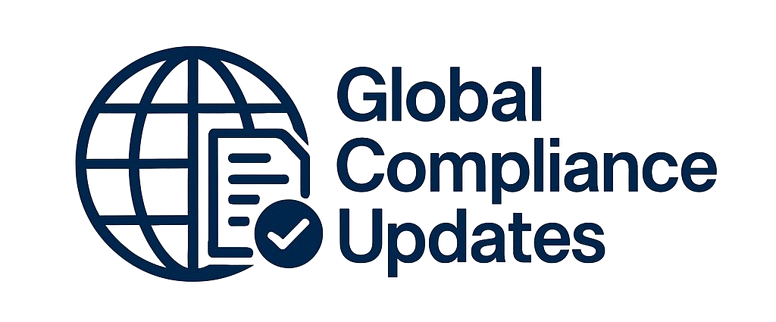Most bankers acknowledge that construction lending is riskier than other types of commercial lending:
- Repayment ability depends on successful completion of the construction before the project can generate cash flow from the sale of the finished property, from rental or lease of the real estate, or permanent take-out refinancing
- During the construction period, the collateral is literally work-in-progress, and often the guarantors do not have sufficient outside net worth or income to pay off the loan
WHY SHOULD YOU ATTEND?
Therefore, participants will learn how to evaluate the developer’s ability to repay the construction loan.
- Developer’s background and expertise
- Contractor’s background and expertise
- Developer’s legal structure
- Owner’s minimum equity,
- Repayment ability from project cash flow, collateral, and guarantees
Develop an appropriate underwriting of the construction project to ensure the resulting structure ensures the bank will be repaid in full, on time, and as agreed.
- Sources and uses, cost review of hard costs & soft costs, appraisal review
- LTV, LTC, DCR
- Interest reserves
- Bonding
Explain how to satisfactorily monitor and manage credit exposure and the construction activity
- Role of and activities performed by real estate construction administration (RECAD)
- Inspections and disbursements
- Reallocations and change orders
- Retention, punch lists, charge-backs
- Causes of and cures for construction problems
- Problem asset management of construction loans
AREA COVERED
Most bankers acknowledge that construction lending is riskier than other types of commercial lending:
- Repayment ability depends on successful completion of the construction before the project can generate cash flow from the sale of the finished property, from rental or lease of the real estate, or from permanent take-out refinancing
- During the construction period, the collateral is literally work-in-progress, and often the guarantors do not have sufficient outside net worth or income to pay off the loan
Therefore, participants will learn how to evaluate the developer’s ability to repay the construction loan, develop an appropriate underwriting of the construction project to ensure the resulting structure ensures the bank will be repaid in full, on time, and as agreed, and how to satisfactorily monitor and manage the credit exposure and the construction activity.
Course Level - Basic/Fundamental
LEARNING OBJECTIVES
This webinar addresses how to mitigate the higher risk, and it offers advice and guidance on how to extend construction loans safely and profitably:
- Construction lending policy - defining a construction loan, outlining necessary information and documentation needed to evaluate construction loan, monitoring loan performance
- Appropriate underwriting and structuring - LTV, LTC, minimum equity, bonding, etc.
- Role and activities of real estate construction administration (RECAD)—sources & uses, costs review, inspections, disbursements, retention, liens, construction problem mitigation
WHO WILL BENEFIT?
- Commercial Real Estate (CRE) lenders, underwriters
- Real estate credit administration team members
- Credit policy managers
- Credit managers
- Credit Risk Managers
- Credit approval officers
- Risk Managers
- Enterprise Risk Managers
- Chief Credit Officers
- Senior Lenders
- Senior Lending Officer
- Bank Director
- Chief Executive Officer
- Bank President
- Board Chairman
Therefore, participants will learn how to evaluate the developer’s ability to repay the construction loan.
- Developer’s background and expertise
- Contractor’s background and expertise
- Developer’s legal structure
- Owner’s minimum equity,
- Repayment ability from project cash flow, collateral, and guarantees
Develop an appropriate underwriting of the construction project to ensure the resulting structure ensures the bank will be repaid in full, on time, and as agreed.
- Sources and uses, cost review of hard costs & soft costs, appraisal review
- LTV, LTC, DCR
- Interest reserves
- Bonding
Explain how to satisfactorily monitor and manage credit exposure and the construction activity
- Role of and activities performed by real estate construction administration (RECAD)
- Inspections and disbursements
- Reallocations and change orders
- Retention, punch lists, charge-backs
- Causes of and cures for construction problems
- Problem asset management of construction loans
Most bankers acknowledge that construction lending is riskier than other types of commercial lending:
- Repayment ability depends on successful completion of the construction before the project can generate cash flow from the sale of the finished property, from rental or lease of the real estate, or from permanent take-out refinancing
- During the construction period, the collateral is literally work-in-progress, and often the guarantors do not have sufficient outside net worth or income to pay off the loan
Therefore, participants will learn how to evaluate the developer’s ability to repay the construction loan, develop an appropriate underwriting of the construction project to ensure the resulting structure ensures the bank will be repaid in full, on time, and as agreed, and how to satisfactorily monitor and manage the credit exposure and the construction activity.
Course Level - Basic/Fundamental
This webinar addresses how to mitigate the higher risk, and it offers advice and guidance on how to extend construction loans safely and profitably:
- Construction lending policy - defining a construction loan, outlining necessary information and documentation needed to evaluate construction loan, monitoring loan performance
- Appropriate underwriting and structuring - LTV, LTC, minimum equity, bonding, etc.
- Role and activities of real estate construction administration (RECAD)—sources & uses, costs review, inspections, disbursements, retention, liens, construction problem mitigation
- Commercial Real Estate (CRE) lenders, underwriters
- Real estate credit administration team members
- Credit policy managers
- Credit managers
- Credit Risk Managers
- Credit approval officers
- Risk Managers
- Enterprise Risk Managers
- Chief Credit Officers
- Senior Lenders
- Senior Lending Officer
- Bank Director
- Chief Executive Officer
- Bank President
- Board Chairman
Speaker Profile
 Dev Strischek
Dev Strischek
A frequent speaker, instructor, advisor and writer on credit risk and commercial banking topics and issues, Martin J. "Dev" Strischek principal of Devon Risk Advisory Group based near Atlanta, Georgia. Dev advises, trains, and develops for financial organizations risk management solutions and recommendations on a range of issues and topics, e.g., credit risk management, credit culture, credit policy, credit and lending training, etc. Dev is also a member of the Financial Accounting Standards Board’s (FASB’s) Private Company Council (PCC). PCC’s purpose is to evaluate and recommend to FASB revisions to current and proposed generally accepted accounting principles (GAAP) that are …
Upcoming Webinars

ChatGPT and Project Management: Leveraging AI for Project M…

Workplace Investigations 101: How to Conduct your Investiga…

Project Management for administrative professionals

The Monte Carlo Simulations in Excel for Risky Investments

Onboarding is NOT Orientation - How to Improve the New Empl…

Dealing With Difficult People: At Work & In Life

Transform Data into Insights: A Beginners Guide to Excel Pi…

Construction Lending And Real Credit Administration: Evalua…

Understanding Accounting for non - Accounting professionals

Harassment, Bullying, Gossip, Confrontational and Disruptiv…

New Form 1099 Reporting Requirements: 2025 Compliance Update

Human Error Reduction Techniques for Floor Supervisors

HR Metrics and Analytics 2025 - Update on Strategic Plannin…

Treating Employees Like Adults: Discipline versus Empowerme…

7 Ways To Beat Burnout: Without Quitting Your Job


How to Write Procedures to Avoid Human Errors

Handbook Overhaul 2026: Compliance, OBBB Act & Beyond

FDA Proposes Framework to Advance Credibility of AI Models

Ethical Terminations: Navigating Employee Exits with Legal …

Understanding EBITDA – Definition, Formula & Calculation

Project Management for Non-Project Managers - Scheduling yo…

4-Hour Virtual Seminar on Hidden Secrets of Selling & Marke…

Validation Statistics for Non-Statisticians

Data Integrity and Privacy: Compliance with 21 CFR Part 11,…


The Alphabet Soup: When the FMLA, ADA, COBRA, and Workers' …

Talent Management: How to Leverage AI and ChatGPT Tools for…


Offboarding with Care: Conducting Legal & Ethical Employee …

2-Hour Virtual Seminar on How to Conduct an Internal Harass…

Payments Fraud Detect & Prevent Check, ACH and P-Card Schem…

Managing Toxic & Other Employees Who have Attitude Issues



Reduce Stress in the Workplace: Effective Ways to Handle Co…





Excel - Pivot Tables - The Key To Modern Data Analysis and …
